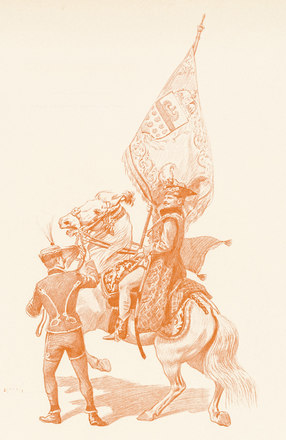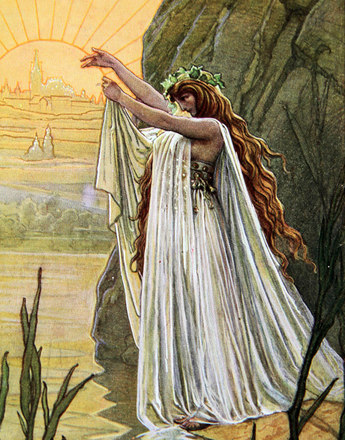Despite the ethnic background, the Transylvanian Romanians identified initially with the Hungarian crown. Their enthusiasm for Hungarianism waned in 1867, however, as a reaction to the Magyarization of the Hungarian half of the empire.
Not only the Romanians, who were the majority ethnic group in Transylvania, but also the ethnic Hungarians asserted national claims in this region. the Magyars saw (and still see) Transylvania as an integral component of their national territory. During the Turkish wars from the mid-sixteenth century until around 1700, the independent Principality of Transylvania existed there alongside the Habsburg kingdom in north-west Hungary and the Turkish-controlled central and southern Hungary. In the national Magyar interpretation, Hungary lived on as an independent state in this buffer land situated between the power blocks. The Székelys, a tribe related to the Magyars in the extreme east of the Transylvanian Carpathian arch, were regarded as a ‘stronghold of Magyardom’ where the region’s isolated position had enabled the ancient Magyar customs to be authentically preserved.
The Austro-Hungarian Compromise of 1867 was a setback for the Hungarian Romanians. The Hungarian state authorities were intent on transforming the Kingdom of Hungary into a Magyar nation state. Transylvania lost its status as an independent crown land granted to it by Vienna after the suppression of the Hungarian revolution as a means of weakening the Magyarization policy. It was returned to Hungary, once again exposing the Romanian ethnic group to this Magyarization.
Even the introduction of parliamentarianism did not improve the political situation of the Romanians, as the Hungarian election law based on tax contributions discriminated against them. The Romanians, most of whom belonged to the lower social and economic classes, were represented in the parliament in Budapest by only a handful of members, who were regularly outvoted by the Magyar majority.
The politicization of the masses proceeded very slowly in Romanian society. Most of the Romanian speakers were smallholders, forest workers and herdsmen, who were barely affected by the modernization and progress of the nineteenth century. The national Romanian movement therefore concentrated on the development of an agrarian cooperative system and the establishment of associations at the village level. The Arcași movement, for example, was a mixture of village fire brigade and national guard that was ideally suited to the needs of the rural population.
As a reaction to the massive Magyarization policy in the last third of the nineteenth century, when repressive measures by the Hungarian authorities in the education system and official names of places and regions were seen increasingly by the ethnic minorities as a threat to their national existence, the leaders of the Romanian nationalist movement became more radical.
The Partidul Naţional Român (Romanian National Party) founded in 1881, although moderate and recognizing Hungarianism and the Hungarian crown, demanded the autonomy of Transylvania. Representatives of the party summed up their demands in a memorandum to Emperor Franz Joseph in 1892. The Emperor referred the leaders to the Hungarian government, which roundly refused to discuss the matter, arrested the spokesmen and banned the party. Measures such as this slowly drove the emerging Romanian intelligentsia towards irredentism and persuaded them that the unification of Romania was the only solution.
Translation: Nick Somers
Gogolák, Ludwig: Ungarns Nationalitätengesetze und das Problem des magyarischen National- und Zentralstaates, in: Wandruszka, Adam/Urbanitsch, Peter (Hrsg.): Die Habsburgermonarchie 1848–1918, Band III: Die Völker des Reiches, Wien 1980, Teilband 2, 1207–1303
Hanák, Péter: Die Geschichte Ungarns. Von den Anfängen bis zur Gegenwart, Essen 1988
Hitchins, Keith: Die Rumänen, in: Wandruszka, Adam/Urbanitsch, Peter (Hrsg.): Die Habsburgermonarchie 1848–1918, Band III: Die Völker des Reiches, Wien 1980, Teilband 1, 585–625
Hoensch, Jörg K.: Geschichte Ungarns 1867–1983, Stuttgart 1984
Hösch, Edgar: Geschichte der Balkanländer. Von der Frühzeit bis zur Gegenwart, München 1999
Kahl, Thede: Rumänien. Band 1: Raum und Bevölkerung. Geschichte und Geschichtsbilder (= Österreichische Osthefte 48), Wien 2008
Rumpler, Helmut: Eine Chance für Mitteleuropa. Bürgerliche Emanzipation und Staatsverfall in der Habsburgermonarchie [Österreichische Geschichte 1804–1914, hrsg. von Herwig Wolfram], Wien 2005



